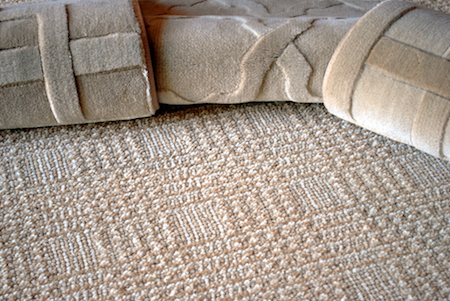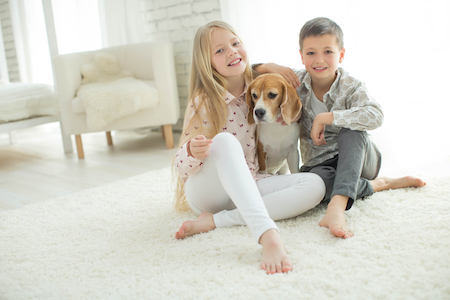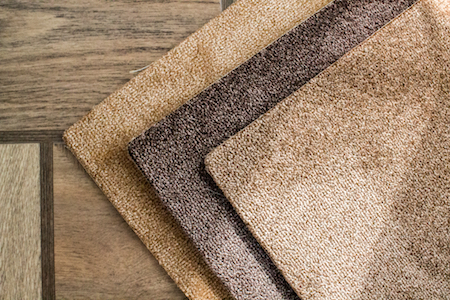Why Carpet Works For Commercial Properties
As a property owner, you’re involved in many decisions each day. If the heat doesn’t work in the winter, that’s on you. If the windows aren’t clean and a tenant complains, that’s on you too.
And while a lot of decisions are made spur of the moment, especially in emergency situations, with other choices, it’s more important to weigh your options wisely.
Take flooring, for example.
Flooring is a significant investment. Choose wisely, and it’ll last you for years. But if you don’t consider all of your options, it could be a pricey mistake.
Choosing commercial flooring can be challenging at best. Not only does it have to look good, but it also has to wear well in a variety of situations. Entryways, hallways, offices, and conference rooms all have different needs.
Fortunately, technology has vastly improved commercial flooring in the past decade. No matter what you have your heart set on, there are ways to incorporate it into your final design.
Carpet typically comes in two categories. Both can be beneficial in a commercial setting; it all depends on your needs.
Broadloom carpet – this is also known as wall-to-wall carpet, and is what most people think of when it comes to buying carpet. They bring it in by the roll, and piece it into your space, depending on measurements. If you go this route, it will be tacked down in a continuous flow from one side of each room to the other.
Modular carpet – this is also known as carpet tiles. Carpet tiles continue to be a good choice for commercial properties that have a lot of change. They are durable and easy to install and replace as needed. Because carpet tiles are more manageable, they can be installed seamlessly anywhere, giving you flexibility with design.
I want carpet for my commercial property. Which one?
Carpeting is one of the best choices for commercial property for a variety of reasons. But it is still important for you to think about how each space throughout the building will be used, and select the right product for each situation. It is perfectly acceptable to use different products in different spaces.
Start with evaluating what the space is used for. In every commercial property, there are certain spaces that will be used more than others. Some for business, some for leisure. Some with heavy traffic, others will barely be used.
Entryways are one of the spaces with the highest traffic levels. And here in Colorado, it also means enduring a wide array of weather conditions. People will walk in with ice and snow on their shoes and boots. You’ll have dirt break lose and stick in the fibers. That means more cleaning too.
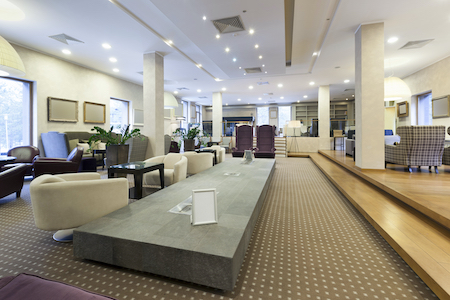 If you head up several floors, or to the back of the building, traffic drops off considerably. That doesn’t mean you want to lower the quality. You still want a cohesive look throughout.
If you head up several floors, or to the back of the building, traffic drops off considerably. That doesn’t mean you want to lower the quality. You still want a cohesive look throughout.
This is one of the reasons carpet tiles excel in commercial settings. You can replace them in high traffic situations periodically to keep them looking fresh. They’ll still match other areas of the building that won’t need replacing as often.
What you should focus on when making your final selection
What are your top concerns when selecting carpet for your commercial properties? We know from experience these are the things you should weigh carefully:
Durability
At the top of the list is durability. The carpet you select should hold up well no matter what type of traffic it receives. You should also think about replacement – is that easy to do? Pay attention to specific areas where this will be of greatest concern.
Maintenance
If you have carpet, it will need to be cleaned regularly. Daily vacuuming will pull dirt to the surface and prevent it from settling in. Regular cleanings should also be top priority. With dirt and grime settling in, the more you clean and remove it, the longer your carpets will last. Also, consider using mats and commercial rugs on the messiest days of the year. That added protection can extend the life of your carpet by weeks, or months.
Use of space
Look beyond the general purpose of each room or space. Also, consider all traffic that moves through each location. How well does it handle with the use of carts or trolleys? Does it work well with a high number of visitors using walkers or wheelchairs? What kinds of deliveries are made each day? Is the space used in harsh conditions, or is it created more for high end use?
Appearance
While use trumps appearance in commercial spaces, it’s still important to keep in mind who is using or leasing your property. Financial institutions often want a more luxurious appearance, while medical focuses on cleanliness.
Noise
The number one reason property managers turn to carpet is for noise reduction. If you’ve ever heard the clunk, clunk of shoes down a tiled or wood hallway, you know how important this can be in some situations. Acoustics can be especially important in large, open spaces. Carpet absorbs noise, which can greatly impact the functionality where office workers may need concentration.
Health and safety
Different carpets have different properties. Commercial flooring should always have moisture barriers, and be able to handle a variety of situations. Mold is always a problem, which is why you should focus on installing a flooring that prevents buildup over time. But don’t forget to look for manufacturers that do so using low VOCs as well. If you’re leaning towards creating a greener environment, one that may qualify for LEED certification, composition may be everything.
And let’s not forget safety. Carpet provides better traction than almost any flooring option. Imagine a slick tile combined with ice and snow; that is a recipe for disaster. Which is why carpet is often the most logical choice. Especially if property visitors cover all age ranges, including people that may be at risk for falling in the first place.
Are you sold on carpet?
Have we convinced you that carpet is the best way to go in your commercial property?
Now it’s time to take the next step, and find out about your options. There are many different ways to incorporate carpet into every space in your design. You can do so and create a neutral palette, or liven things up with color and patterns.
How can we help you bring new carpet into your commercial space?
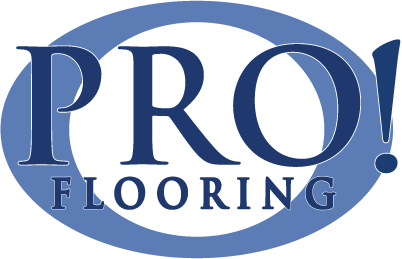
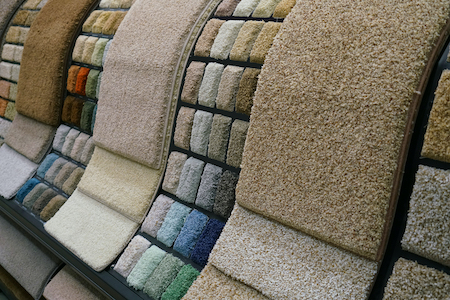 Standard carpet rolls come in standard sizes, usually 12, 13.6, or 15 feet wide. If your room is wider than 12 feet, you will have a seam running somewhere in the room. That’s where it’s important to have an expert help you, to minimize the effect.
Standard carpet rolls come in standard sizes, usually 12, 13.6, or 15 feet wide. If your room is wider than 12 feet, you will have a seam running somewhere in the room. That’s where it’s important to have an expert help you, to minimize the effect.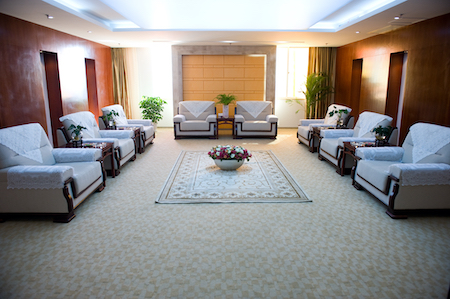 Some facilities depend on durability and maintenance-free functionality. Others are more concerned with how it looks to the general public. Heavy foot traffic will track in more dirt and debris. If you use a lot of liquids, or have a manufacturing process of any kind, it may be more important to focus on toughness.
Some facilities depend on durability and maintenance-free functionality. Others are more concerned with how it looks to the general public. Heavy foot traffic will track in more dirt and debris. If you use a lot of liquids, or have a manufacturing process of any kind, it may be more important to focus on toughness. It also means environmental protection. It ensures materials are sustainably sourced, and that every part of the process is performed while caring for the environment.
It also means environmental protection. It ensures materials are sustainably sourced, and that every part of the process is performed while caring for the environment.
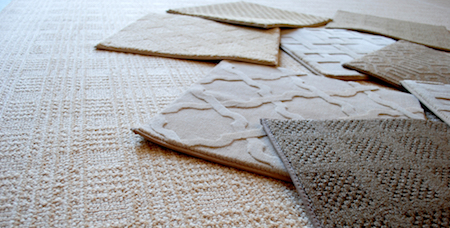 Carpet tiles are, as the name implies, squares of carpet that can be fit together inside your room. They usually are cut to 24 x 24 inches, or 18 x 18 inches square, but with their popularity, you’ll find them in all sorts of sizes.
Carpet tiles are, as the name implies, squares of carpet that can be fit together inside your room. They usually are cut to 24 x 24 inches, or 18 x 18 inches square, but with their popularity, you’ll find them in all sorts of sizes.